You would not think of the dairy industry as one of the champions of new and exciting technology. Farmers are more likely to conjure up associations as stalwart defenders of tradition and practitioners of earthy wit and wisdom. In fact, the very idea of raising animals and working the land seems anti-technological.
But times have changed, and so, apparently, have dairy farmers. In the following list, you will be surprised and impressed at how dairy farmers have co-opted really cool tech to make their jobs easier and themselves more efficient. From drones to facial recognition software and from robotic milkers to milk-fueled heaters, dairy farmers use it all.
1. Dairy Farming Apps
Suppose you thought you had heard of all the possible apps and could no longer be surprised when someone says that there’s an app for that. Well, there is an app for dairy farming as well.
Actually, dairy farming apps are not that surprising. They mostly consist of management tools that are related to cows, their milk production, and health.
But dairy apps offer something that an office full of accurate records cannot. All the information that dairy farmers need goes with dairy farmers wherever they go and is available at their fingertips wherever they are on the dairy.
With an eye toward cutting costs and running efficiently, these apps help the progressive dairy farmer keep track of the herd and the bottom line at the same time. All the apps listed below provide different takes on herd management, but some emphasize various aspects of what can be done in relation to your herd.
Recommended Resources
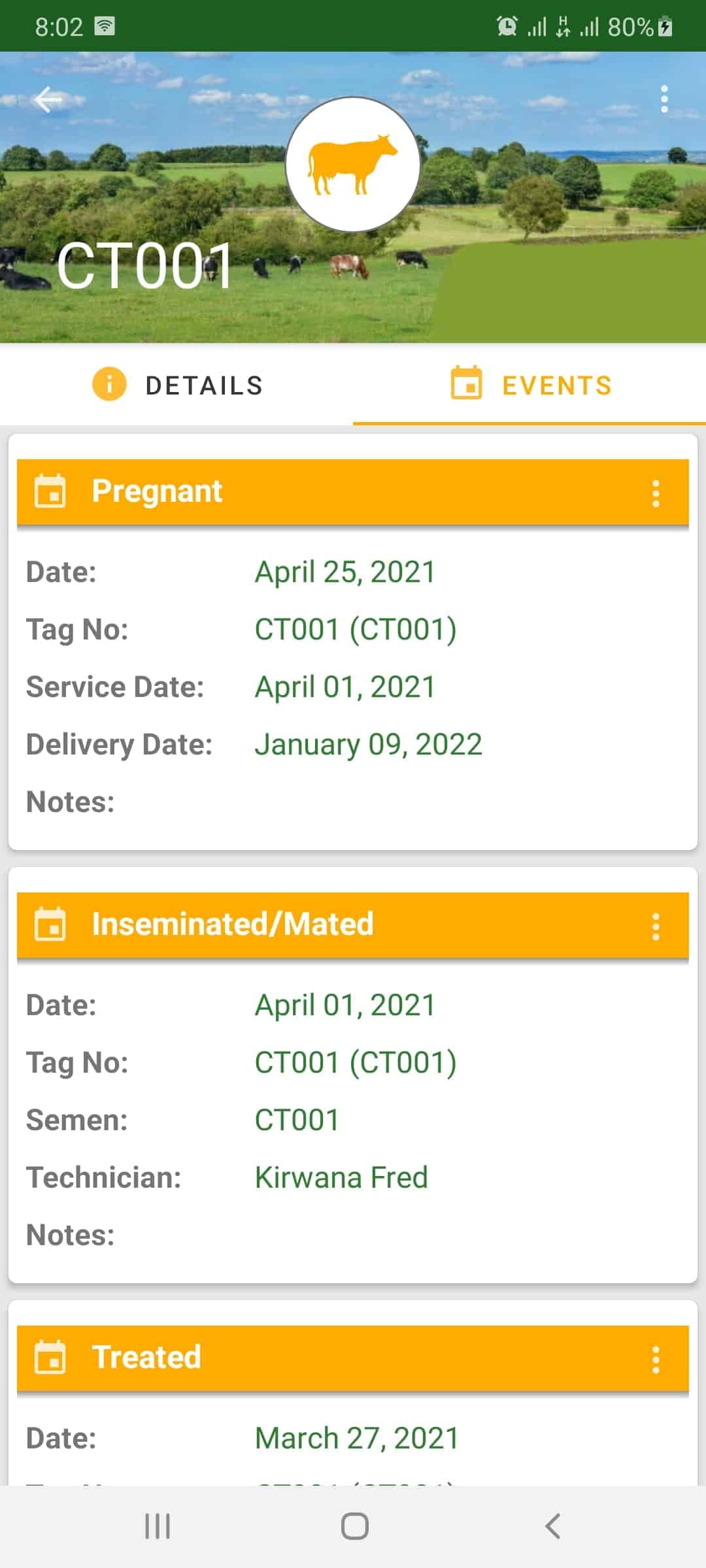
Source: Bivatec
My Cattle Manager - Farming App
My Cattle Manager is an extensive management system that provides a broad range of services and can help the dairy farmer manage everything from births to milk production. The dairy farmer can keep track of:
The app also offers reports on milk production, costs, and profits. You can look at this data within a given period and produce pdf reports of it. You can also backup and restore data.
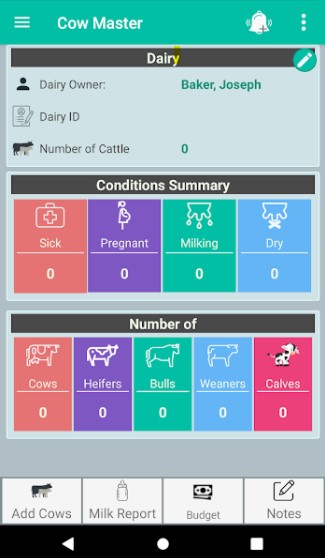
Source: Google Play
Cow Master - Herd Management App for Dairy Farms
The Cow Master app offers milk production management and farm budgeting tools that help the busy dairy farmer keep track of the farm.
This app brings a particular emphasis on managing the different periods of the herd, including:
The app can keep records on your herd and specializes in keeping you up to date with tasks through aggressive notifications.
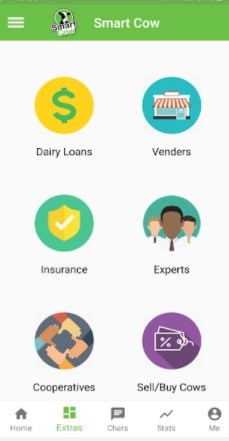
Source: Google Play
Smart Cow - Dairy Management System
This app specializes in record keeping. With this app, you can organize many records of your cows that you need to have access to instantly.
Among the kinds of information this app gives you access to are:
Stay informed with this app about all the goings-on with your herd and be able to make informed decisions by having all the information at your fingertips. It is always a great advantage to have health records available to you while you are talking to your vet if your cow has a problem.
2. The Robotic Milker
A robot that milks cows sounds like the premise for a Far Side cartoon, but it is, in fact, a significant advancement in the dairy farming industry. An invention that sounds almost absurdly simple can positively impact a dairy farm in a variety of ways. Some of these impacts you might expect, but others you may not.
Robotic milking works about as you would imagine. Well, maybe not entirely like you would imagine. C-3PO does not sit at the ready to milk your cows. But it does involve a mechanism that:
What is even more remarkable is that most cows will go to the milking station of their own accord. They do not need to be coerced or cajoled into being milked.
How could that possibly be the case?
Why a Robotic Milker?
When you think about it, a robot milker makes perfect sense. Milking is a tedious task that requires precision and repetition for long hours early in the morning and yet again at the end of the day. With the increasing difficulty of finding labor for dairy farms, milkers are hard to come by. Even with the workforce, farmers could be doing other things.
With the robotic milking process, one “milker” can go on doing it for hours and hours without the slightest symptom of tendonitis. Also, because the cow gets fed while milking, it typically goes to the milker on its own multiple times a day. It is quite a thing to see a cow go up to a machine and get milked without human supervision.
Technological Dairy, Human Dairy Farmer
The key to this system is the transponder that cows wear around their necks. This keeps track of basic health stats going on with the cow and relays it to the farmer through the milking machine, which reads the transponder whenever the cow comes to be milked. This gives the farmer accurate information about what the cow needs.
When the cow walks up to the milking machine, the machine takes over the whole process entirely.
The milking machine:
The robotic system that milks cows increases production and decreases labor costs, which allows the dairy farmers to do other things. Namely, it gives dairy farmers more time (and information) to focus on the cows themselves rather than the tasks surrounding the cows.
So one of the surprising benefits of a robotic milking system is a more human dairy. With this tedious chore taken away from the farmers, they have more time to interact with the cow's top side, making the cows more willing to interact with them.
3. More Dairy Robots
If milking on the dairy farm is tedious, there is another aspect to the work that is backbreaking:
Not only is it hard to find labor willing to do work like this, but it is also hard to find a new generation of dairy farmers interested in spending all their time doing this kind of work when what they want to do is spend time on the health and comfort of the cows.
Now there are robots that use sensors to travel around the barn shove feed closer to the stalls. They also clean up the manure that accumulates where the cows live. Having reliable labor do this day in and day out saves dairy farmers' backs and the dairy farms themselves.
With the difficulty of finding reliable labor, the inevitable decline in interest in dairy farming, and the rise of production costs, the advent of robotic labor is literally keeping dairy farms from going out of business.
4. 24 Hour Cow Monitoring
The cow is the lifeblood of the dairy farm. If the cows are not well and stop eating for a time, that can affect milk production. For the dairy farmer, almost nothing takes precedence over the health and well-being of the cows on the farm. So the sooner the dairy farmer knows what is wrong with a cow, the better.
But the problem is that dairy farmers can not be up all hours of the day and night, watching their cows for the minor signs of illness. That would be physically impossible. But not for much longer.
Some farms are experimenting with systems that incorporate recognition software, the likes of which are used to identify pedestrians in self-driving cars or in Facebook to identify who in the picture to tag. Now a dairy farmer can sleep better while this technology keeps an eye on the herd.
Facial Recognition Software
Essentially, this is how it works. The software uses facial recognition technology to pinpoint individual cows. Once it can determine who is who, it can monitor the cows and pick things like:
These three things provide insight into the cow that is critical knowledge to the dairy farmer. To keep the herd producing milk as well as possible, the dairy farmer needs to address the problems that this information points to.
The software can identify cows based on their pelt patterns. Every dairy cow has a unique design on her pelt as well as unique dimensions to her face. Using this information, the software can keep track of the dairy cows and watch for signs to detect how they are doing and how well they are producing.
Dairy Industry Potential
The software was developed by Cainthus, a computer and AI company started in Dublin, Ireland, which continues to be based in Ireland as well as California. They have recently launched their product line ALUS with modules that check on cow nutrition and behavior.
In 2017, they did an extensive test of the product and the recognition software at a dairy farm in California. They used over 40 cameras to monitor a herd of about 400 dairy cows, making the ratio of cameras to cows around 1 to 16. The cameras supplied video of the cows, and recognition software identified individual cows.
The results were that the cameras were able to monitor feed intake and physical manifestations of abnormalities. By watching these things, the software could keep track of interesting information about the cows, such as:
With the advent of camera recognition, the software could potentially replace the need for a transponder around the cow's leg or neck. It can also be incorporated with robotic milking machines to correlate a relationship between feeding and milk production.
5. The Swinging Cow Brush
So much of what goes into improving a dairy farm is about improving the production of milk. But unlike a manufacturing plant, you are not dealing with machines that make machines. You are dealing with cows that make milk. So part of making the cows more efficient is making them happier.
Enter the DeLaval Swinging Cow Brush. This automatic cow brush is like a carwash for cows. In fact, the brush is very similar to one of the actual car wash brushes. It uses stiff bristles and spins around while being movable and gentle. It is able to sense when being obstructed and stop so it does not hurt the cows.
For their part, the cows love the brush and use it eagerly. Why? Think of the brush as a giant scratcher, reaching and soothing all the parts the cow cannot get to. This tends to result in:
When cows feel like they are being assaulted by flies, they become irritated. But with the presence of what is basically an automated back scratcher, cows can relax and get back to doing what they do best: ruminating over the next batch of milk.
6. Milk as Heating Fuel
Possibly the most remarkable thing to come about since the invention of canned beer (or bottled milk) is the ability to use milk as a heat source. Admittedly the only people who are cheering right now are probably dairy farmers (a limited audience), but that does not make this tech any less jaw-dropping.
Dairy farmers universally have two pressing needs:
After milking their cows, dairy farmers need to cool milk to reduce bacteria in the milk. Often at the same time, especially in winter, farmers need to heat water in order to clean cow teats and sanitize milking equipment or to heat concrete slabs, so manure does not freeze to it in the winter.
Of the 126,000 kWh of electrical energy that dairy sheds use each year, approximately 21% of it is used to cool down milk, and 32% of it is used to heat up water. That is a lot of energy.
What if you could use the byproduct of one process to facilitate the other? Impossible?
Read on to see how it works.
Milk Refrigeration as Water Heater
Dairy farmers use glycol in the process of refrigerating milk. Oddly enough, the most significant byproduct of this process is, you guessed it, heat.
In fact, it is estimated that farmers lose heat energy each year to the tune of about 24,000 kWh. Except, now farmers can use this energy to heat shed water instead of losing it. Here is how it works.
Using a glycol chiller system from a company called Xchanger, the system essentially adds on a second exchange to what it already does:
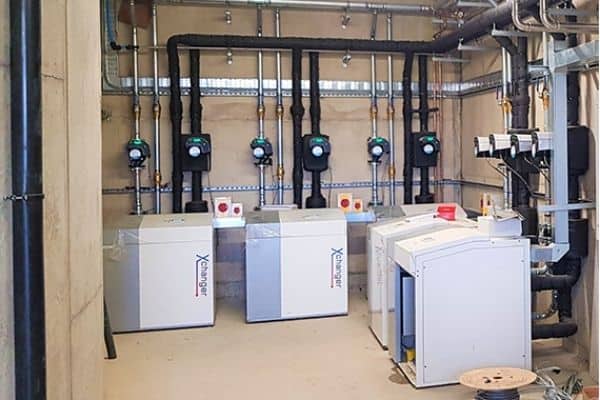
Source: Xchanger
How it Works?
Using what is a simple premise, this innovative product saves dairy farmers an astounding 37% on total energy consumption. In an industry where cutting production costs can mean the difference between staying open or closing down, this innovation is a lifesaver.
7. Drone Technology
Not all dairy farmers keep their cows in a barn all the time. Some let their herds out to graze on the land. While opinions about the value of this vary, if you are a dairy farmer who lets the herd out of the barn, you now have a tool that can help you keep track of your herd's whereabouts and activities.
Using drone technology, you can:
Drones have long been fodder for conspiracy theories involving civilian monitoring, but the monitoring drone's consent is more benign for the dairy farmer. By keeping a close bird's eye view of the herd, you avoid the difficulty of seeing in and amongst cows that are stationary and may inadvertently hide others from view.
This change of perspective is invaluable. With drones doing the overhead work, you can get a clear view of your herd and have a better idea of what they need when they need it, rather than after the fact when the situation has already become an emergency.
8. The Ear Tag
If drones are not your thing, you can still keep tabs on your wayward herd easily enough. Ear tags are a great way to keep track of:
Together with an ankle pedometer, you can understand quite a lot about your herd.
If your cows are let out of the barn, this means that you do not have to risk losing track of them through a damaged fence. You can also monitor how much food they are taking in at the trough. And if you find that a particular cow is resting quite a bit, then you might have one that is in estrus.
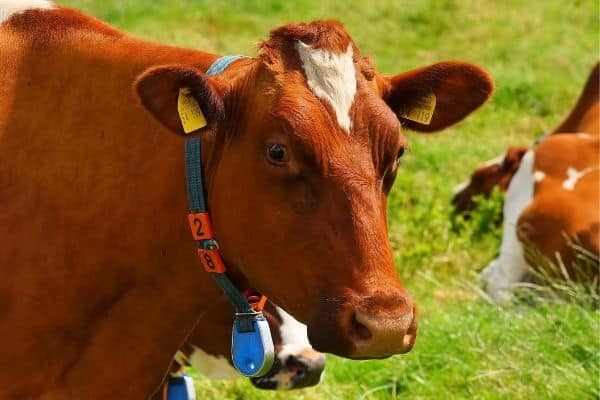
Ear tags, like the neck transponder or the ankle pedometer, are just another high-tech way that dairy farmers are moving into the Information Age.
9. Cooling Mats
Another significant consumption of energy occurs in the dairy farmer's summer-long battle to keep the herd cool. It is bad for cows to be stressed by the heat, so they often depend on their farmers to cool them down. But this requires high energy and water consumption to run the fans and sprinkler systems that accomplish this.
But in recent years, technological developments have made it possible for cows to be cooled down by another means, one that does not:
And all this is made possible by a simple-looking mat.
The Cooling Mats at Work
Keeping dairy cows cool is a crucial dilemma during the summer because when cows ruminate (the process of making milk), they create heat. So if the environment around them is hot, they become especially stressed when they try to produce milk. Since all things dairy come down to milk production, keeping cows cool in the summer is crucial.
Cooling mats can be placed where the cows eat or lie down. When the cows rest on these mats, the mats provide a cool place for them because of a circulation system where cool water runs through the mats and is cycled through an evaporative chiller.
Some studies on the products suggest that the mats can:
10. Your Own Personal Weather Station
If it is one thing that all farmers do, it is to obsess over the weather. And with the unusual weather events that have happened recently, it is more important than ever for farmers to be able to have accurate, up-to-date weather information available when they need it wherever they are.

And so, if you are a dairy farmer, one way that tech has helped you out is to provide the ability to have your own weather station. Weather stations come in a variety of brand options, but most are surprisingly affordable, being between $100 and $200.
But all of them provide similar services. With a weather station at your dairy farm, you can receive:
Some units also hook you up to a global weather network that allows you to compare historical highs and lows as well as what is happening in your area versus in your region.
11. Wi-Fi Camera System
With the emphasis on recognition and the transference of information across the different platforms, you do not want to forget some of the more "basic" forms of technology and the improvements they can make for dairy farmers even without the fancy-dancy software.
Having a wi-fi-based camera system on your dairy farm can provide loads of benefits for the dairy farmer. Simply having the ability to see into many different parts of the farm from one location can help you easily prioritize what you need to do and where you need to be.

With a camera system installed through the dairy farmers can be in one place while they keep their eyes on:
And if you have a camera system that is hooked up to Wi-Fi, you can link to it from your smartphone. This means that wherever you are in the dairy, you can see what is going on in the priority places where you have installed cameras.
Bluetooth Technology
Bluetooth is another run-of-the-mill technology that could actually be very beneficial to the dairy farmer. You should not overlook the practical benefits of this if you are a dairy farmer. First, take a moment to consider:
Now possibly, you understand the practical importance of Bluetooth technology.
With a Bluetooth headset set up with your phone, you can use your device hands-free. Given the number of natural substances your hands come into contact with as a dairy farmer, hands-free is for more than drivers. You can also save lives through bacteria reduction!
Smart Water Bottle
If nothing else, this article has shown how many things are becoming smart and helping dairy farmers do their job more efficiently. Even water bottles are getting in on the action. Instead of being focused on the health of the cow, the smart water bottle is focused on the health of the dairy farmer.
A smart water bottle is basically a water bottle that tells you when to drink. While this may sound a lot like nagging, it is actually pretty useful. Dairy farmers are notoriously busy and do not often take time for themselves. Focused on the herd's needs, in hot weather, they can often forget to take care of basic needs for themselves.
Enter the smart water bottle. This water bottle:
Final Thought
With technology affecting all aspects of modern life, it is no surprise that the dairy farmer also benefits from cool tech. From robots milking cows to water bottles that keep you hydrated, technology makes its presence felt all across the dairy farm.

